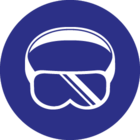 Likely to cause
Likely to cause
 Can cause
Can cause
 May cause
May cause
Trisodium nitrilotriacetate
CAS: 5064-31-3
How can this chemical affect my health?
Acute (Short Term) Effects

Toxic to Humans & Animals – Toxicity or fatality on contact, ingestion or inhalation to humans and other mammals.

Eye Irritation – Irritation or serious damage to the eyes.

Skin Irritation – Irritation or serious damage to the skin.
Chronic (Long Term) Effects

Cancer – Increased cancer risk.

Other Health Effects – Can cause serious damage on contact or ingestion.
Inherent Hazards

Reactive – May spontaneously ignite or explode on its own or in contact with water.

Restricted List – This chemical is on a list from an authoritative body recommending that its use be avoided.
How does this chemical impact the environment?

Acute Harm to Aquatic Ecosystems – Biological harm or possible death to fish or other aquatic organisms following a single exposure.
What safer alternatives are available for this chemical?
Find case studies related to substitutions for this chemical in SubsPORT, the substitution support portal.
How am I likely to be exposed to this chemical?

Ingestion

Eye contact
How can I protect myself from exposure to this chemical in the workplace?

Safety eyeware